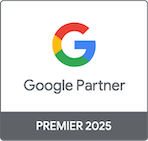Google display placement issues occur when ads appear on low-quality, off-target, or unsafe websites or apps, leading to wasted spend and potential brand damage.
How to avoid Google display placement issues: An 8-step proactive strategy for 2025
Abisola Tanzako | Nov 04, 2025

Table of Contents
- Understanding Google display placement issues
- Common Google Display placement issues and how to spot them
- Low-quality or irrelevant sites
- Made-for-Advertising (MFA) sites
- Inappropriate or unsafe content
- Excessive mobile app placements
- Unverified or non-English sites
- 8-Step proactive strategy to prevent Google display placement issues
- Step 1: Define what “good placement” means for your brand
- Step 2: Set smart defaults and baseline exclusions
- Step 3: Control reach with targeting layers
- Step 4: Monitor placement reports continuously
- Step 5: Maintain dynamic exclusion lists
- Step 6: Build and optimize whitelists
- Step 7: Use technology to stay proactive
- Step 8: Evolve and optimize over time
- Example: A proactive placement workflow in action
- Automating brand safety and placement quality with ClickPatrol
Google display placement issues occur when ads appear on irrelevant, low-quality, or inappropriate websites, reducing campaign effectiveness and wasting ad spend.
Adalytics (2024) estimates that about 15% of placements on the Google Display Network (GDN) fall into this category, leading to inefficient ad budgets and potential harm to brand image.
The Google Display Network offers vast reach, precise targeting, and diverse creative options, but this scale comes with placement risks. In this article, we will explore an 8-step proactive strategy to maintain brand safety, improve ad efficiency, and ensure placements align with your goals.
Understanding Google display placement issues
Google display placement issues occur when your ads appear on low-quality, irrelevant, or unsafe websites. These placements can waste your ad budget, harm brand reputation, and reduce campaign performance.
Common causes include poor targeting, insufficient placement exclusions, and insufficient monitoring, making it essential to track where your ads appear and ensure they align with your brand’s goals.
Common Google Display placement issues and how to spot them
Below are some of the most common placement problems and how to identify them:
Low-quality or irrelevant sites
Ads may appear on websites with thin content, spammy layouts, or unrelated topics. Review your placement reports regularly and flag domains with low engagement or poor traffic quality.
Made-for-Advertising (MFA) sites
These pages are filled with ads and little real content. They usually show high impressions but few conversions. Spot them through suspiciously high CTRs with no measurable ROI.
Inappropriate or unsafe content
Ads placed next to controversial or adult material can harm your brand image. Use Google’s category exclusions and content labels to prevent this.
Excessive mobile app placements
Ads often appear in gaming or utility apps where accidental taps occur. Track performance by placement type and exclude these apps where necessary.
Unverified or non-English sites
Sometimes ads appear on sites in different languages or seem questionable. Monitor domain sources and language settings to avoid this.
8-Step proactive strategy to prevent Google display placement issues
Step 1: Define what “good placement” means for your brand
- Clarify what qualifies as a quality placement by identifying suitable industries, topics, and audiences.
- Define performance metrics such as CTR, conversions, and viewability, and record your brand suitability guidelines for consistent targeting and exclusions.
Step 2: Set smart defaults and baseline exclusions
- Use Google’s brand safety and content filters to block sensitive or irrelevant content.
- Add industry blocklists from reputable agencies and refresh them regularly.
- Exclude irrelevant mobile app placements to prevent wasteful clicks.
Step 3: Control reach with targeting layers
- Combine audience and contextual targeting for precision.
- Use whitelists of trusted publishers for control and turn off Google’s automatic targeting expansion to prevent irrelevant reach.
Step 4: Monitor placement reports continuously
- Check your “Where Ads Showed” report regularly to identify low-quality or suspicious sites.
- Set automatic exclusion rules (e.g., remove pages with CTRs below 0.1% or no conversions after 500 impressions).
- Watch for recurring underperforming categories that signal deeper placement quality issues.
Step 5: Maintain dynamic exclusion lists
- Use campaign-level exclusions for isolated problems and account-wide exclusions for repeat offenders.
- Create shared exclusion lists to save time, review them monthly, and automate rules based on performance metrics.
Step 6: Build and optimize whitelists
- Tag domains that generate conversions or high-quality engagement and add them to a whitelist.
- Over time, direct more budget toward these trusted sites to improve ROI and reduce placement risk.
Step 7: Use technology to stay proactive
- Ad protection tools like ClickPatrol continuously scan placements, detect fraudulent or irrelevant sites, and automatically exclude them.
- With features like domain risk scoring, alerts, and detailed reporting, you can safeguard budgets and maintain campaign quality without manual cleanup.
Step 8: Evolve and optimize over time
- Review your exclusion and whitelist rules quarterly to spot trends and remove outdated filters.
- Try new targeting methods, stay informed about ad fraud updates, and adjust your risk tolerance as your ad spend grows.
Example: A proactive placement workflow in action
Here’s what a well-structured proactive process might look like:
Before launch
- Implement Google content exclusions.
- Add a list of known bad-domain blocklists.
- Eliminate mobile application placements. (where irrelevant)
- Enable audience and contextual targeting
After launch (First 7 days)
- Check the placements report every day.
- Mark off domains that are poorly engaged or have irrelevant content.
- Feed flagged sites into ClickPatrol for automated exclusion.
Ongoing (Weeks 2-12)
- Carry out weekly reviews of placements.
- Introduce a whitelist of the most successful sites.
- Adjust bidding toward reputable placements.
Quarterly
- Audit placements and lists.
- Refresh brand suitability parameters.
- Review ClickPatrol insights and refine automation rules.
Automating brand safety and placement quality with ClickPatrol
Avoiding poor ad placements is not about luck; it is about strategy, intelligence, and automation.
By defining placement standards, applying smart exclusions, monitoring results, and leveraging automation, you can protect every ad dollar while ensuring your campaigns appear only in trusted environments.
ClickPatrol helps advertisers stay one step ahead. It scans, detects, and blocks low-quality or risky placements before they affect campaigns, ensuring your ads run only on reliable, high-performing sites.
Take full control of your Google Display placements today. Use ClickPatrol to automatically detect, block, and optimize for only high-quality, brand-safe sites, so every click counts.
Frequently Asked Questions
-
What are Google display placement issues?
-
How do I avoid bad ad placements on the Google Display Network?
Set clear placement standards, use Google’s exclusions, refresh blocklists, review placement data frequently, and use automation tools like ClickPatrol.
-
How does ClickPatrol help with Google display placement issues?
It automatically identifies and blocks unsafe or irrelevant placements using advanced analytics and automation.
-
What's the benefit of using whitelists and exclusion lists?
They ensure ads only appear on trusted, high-quality sites that align with your brand and performance goals.






